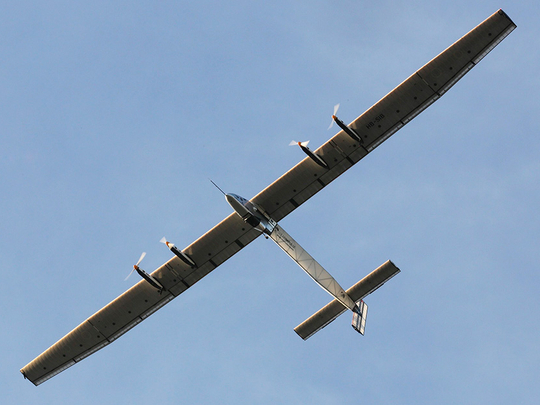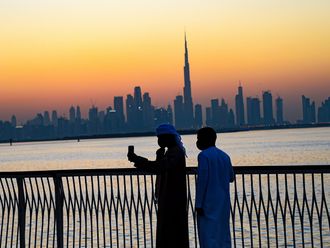
Abu Dhabi: The weather is expected to play a major role as the first solar plane attempts to cross the Pacific from China in its seventh leg of a historic global trip without a drop of fuel.
After reaching China next week, Solar Impulse-2 has to wait for favourable weather for at least two weeks there to cross the Pacific towards the United States, a spokesperson for Solar Impulse, told Gulf News on Thursday.
“We have to wait for weather conditions [with ample daylight] to fly over the Pacific. We can’t fly [during the dark alone],” Alexandra Gindroz, media relations manager at Solar Impulse, said on phone from Switzerland headquarters of Solar Impulse. The first possible time to cross the Pacific [from China] may be mid-April, she said.
Bertrand Piccard, initiator and chairman of Solar Impulse, piloted the plane in its 13-hour long flight to Mandalay from the North Indian holy city of Varanasi from where it departed on Thursday at 5.22am local time.
The flight landed at Mandalay in Myanmar on Thursday evening.
The Solar Impulse team will have a two-day long layover at Mandalay before flying further to Chongqing in China in its fifth leg. In its sixth leg the flight will land at Nanjing in the East Coast of China near Shanghai. There it will have the longest halt in its initial runs, while waiting for favourable weather.
The time will be utilised for many awareness activities on clean energy, as was done in Abu Dhabi, the spokesperson said.
During the Varanasi- Myanmar flight, Solar Impulse-2 crossed the Son river near Dehri-on-Sone and passing Chittagong in Bangladesh at an altitude of 8,000 metres.
Piccard and André Borschberg, co-founder and CEO of Solar Impulse, take turns to pilot the 35,000km flight around the globe, accumulating 500 flight hours over five months to spread the message that clean technologies can be achieved through a pioneering spirit.
The zero-fuel aeroplane will stop in China, USA, Northern Africa or Southern Europe before returning to Abu Dhabi to complete its circumnavigation of the world.












